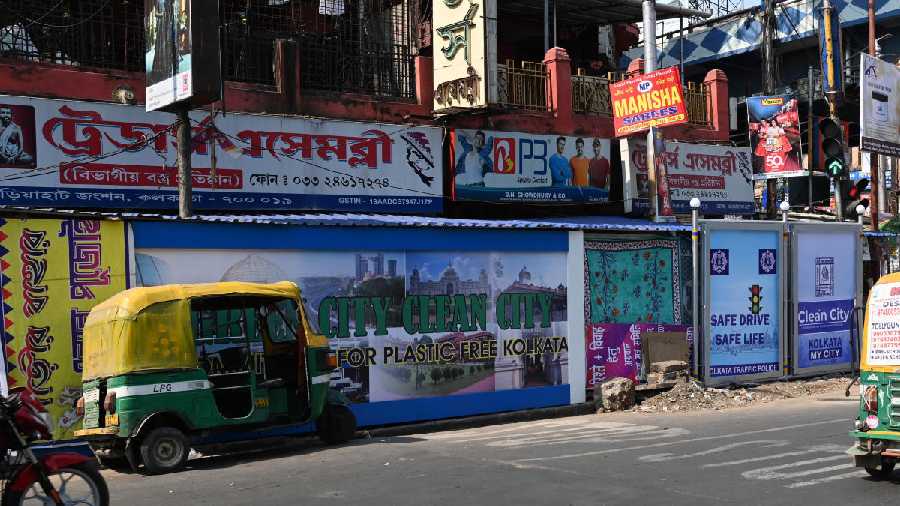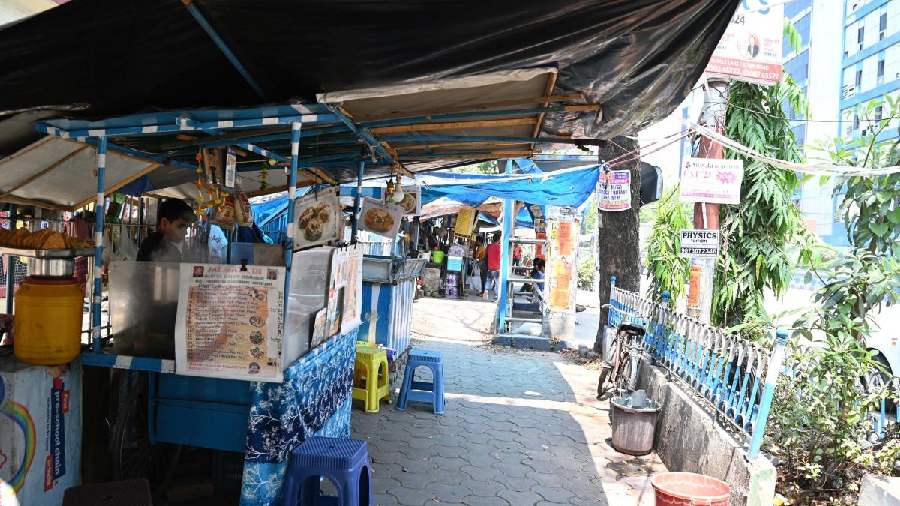The street-facing backs of some of the footpath stalls in south Kolkata’s Gariahat have been covered with flexes or metal plates mounted on rectangular panels as examples of how the rear of these stalls could look if it was covered.
If approved by the civic authorities, all stalls will have similar panels. At present worn-out bed linen is hung there to cover the stalls’ rear.
The stalls are an eyesore anyway. The ragtag covering has made them many times worse.
Debasish Kumar, mayoral council member in charge of hawker rehabilitation in the Kolkata Municipal Corporation (KMC), said flex had been used to cover the rear of one of the stalls.
In the others, metal panels have been used. “Personally, I liked the metal panels more. They are looking better. A decision will have to be taken before similar panels are put up at the back of other stalls,” said Kumar.
“We have also proposed that there be some space open at the back through which hose pipes of fire tenders can pass. In case of a fire in the area, there needs to be space to take the pipes,” said Kumar.
The town vending committee of Kolkata — made of elected representatives, civic officials, police officers and hawker leaders — has allowed the construction of tin shades above hawkers’ stalls.
Accordingly, the shades have been built above almost all stalls in Gariahat.
The Street Vendors (Protection of Livelihood and Regulation of Street Vending) Act 2014, a central legislation, has empowered the town vending committee of a town or a city to take decisions on hawkers at that place.
Kumar is a member of Kolkata’s town vending committee.
But the rear of the stalls has remained open. Hawkers said they were forced to hang the worn-out bedsheets at the back to protect their wares from dust from roads.
When it rained in March, many hawkers had covered their stalls with plastic sheets in violation of rules. The hawking rules framed by the state government ban the use of plastic or other flammable products in stalls.
Architect Abin Chaudhuri, who has designed many public spaces in the city, said the metal panels looked good.
The civic body, architect Chaudhuri said, should be careful about advertisements or other content that will be displayed on the panels.
“These panels have the potential of making the area look aesthetic. The civic body should not crowd all the panels with same content. Some of them can display advertisements, some can have graffiti, while some others can have some other content. Having the same content on too many panels will make the stretch look dull and monotonous,” he said.
Chaudhuri said the KMC and the town vending committee should keep a part of the panels open for ventilation.
Officials of the KMC said there have to be gaps for entry and exit of people from the footpath after every few stalls. At present all such gaps are blocked either by furniture belonging to hawkers or by display stands.

